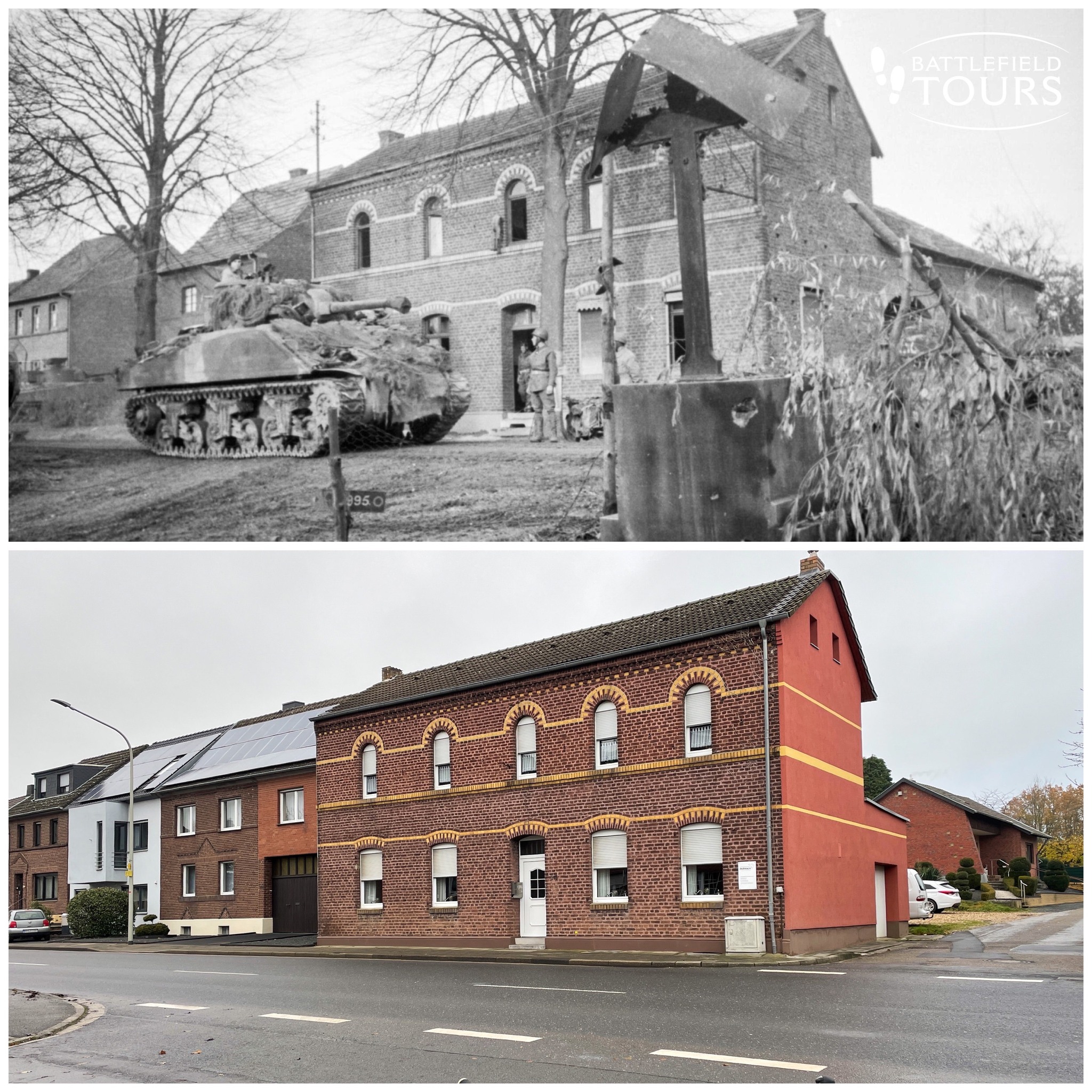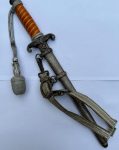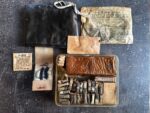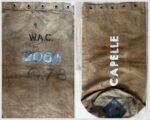The Battle of Geilenkirchen
This post is also available in:
 Nederlands
Nederlands
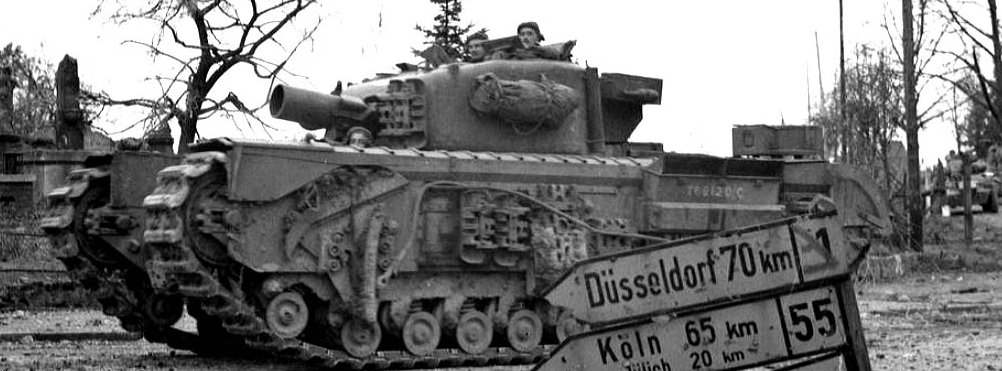
On November 18, 1944, the Allies launched an offensive to capture the German city of Geilenkirchen. As the city was on the German border of the British and American armies, Geilenkirchen was captured in a combined Anglo-American operation called Clipper. It was the first battle on German soil for the British army. We have made a unique then and now photo series of this battle.
The German town of Geilenkirchen is located on the river Wurm, about 20 kilometers north of Aachen. Both the British 43rd (Wessex) Division and the US 84th Infantry Division participated in this operation, both formations were supported by armored units. This then and now photo shows British soldiers from the Wessex Division leaving for the offensive’s starting line, past the Paul Teeuwen & Zonen brickworks in Gillrath. The first house has been demolished, the house in the background is still visible.
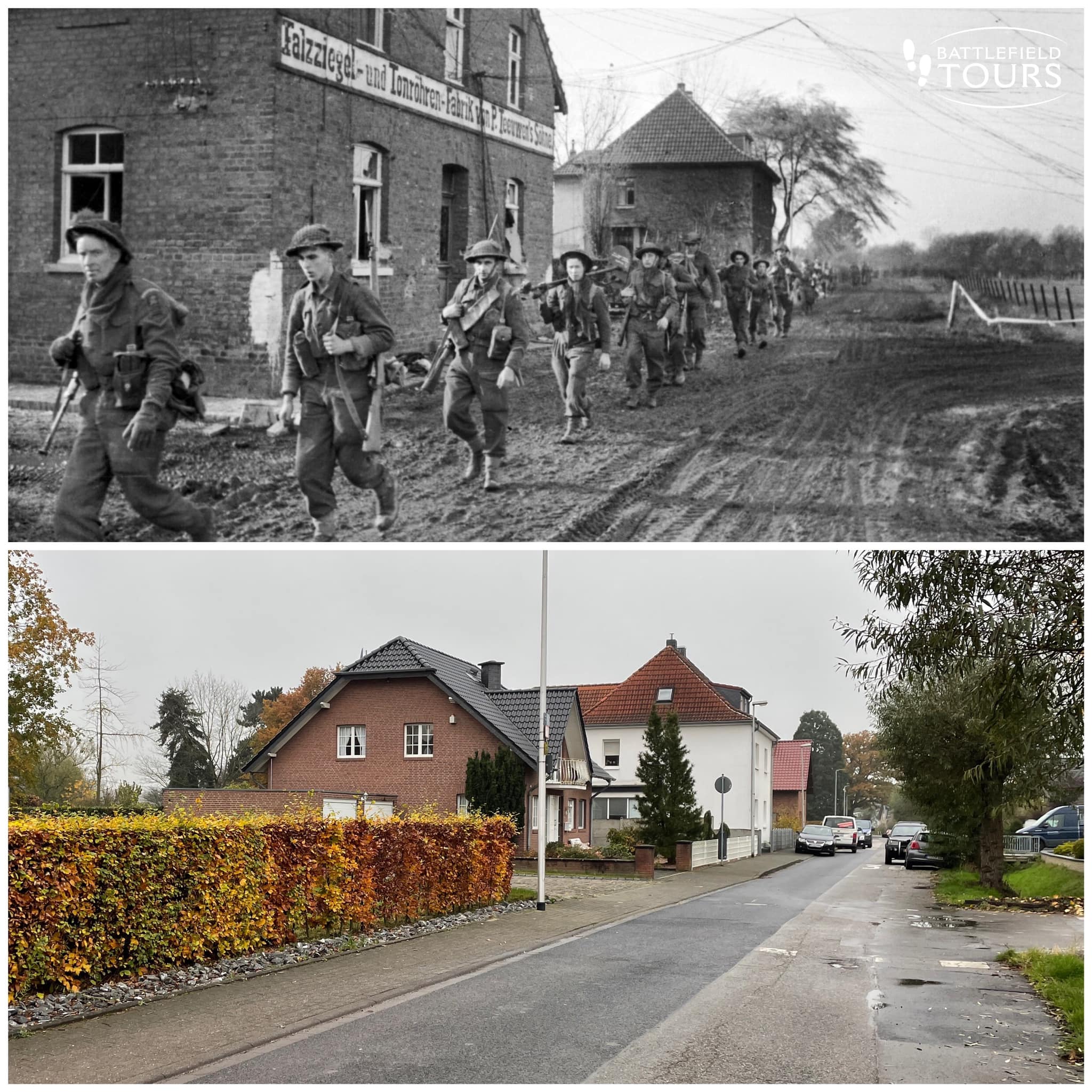
The photo below shows tanks from the 4th/7th Dragoons Guards entering the village of Gillrath from the west to support the attack by the 214th Brigade of the British 43rd (Wessex) Infantry Division. The Sherman ‘Crab Mine’ Flail Tank parked to the left belongs to the C-Squadron of the Lothians and Border Yeomanry, assigned to support the 43rd Division. These tanks got stuck in the mud during the attack and were unable to clear the mines. As a result, the engineers had to clear the minefields by hand.
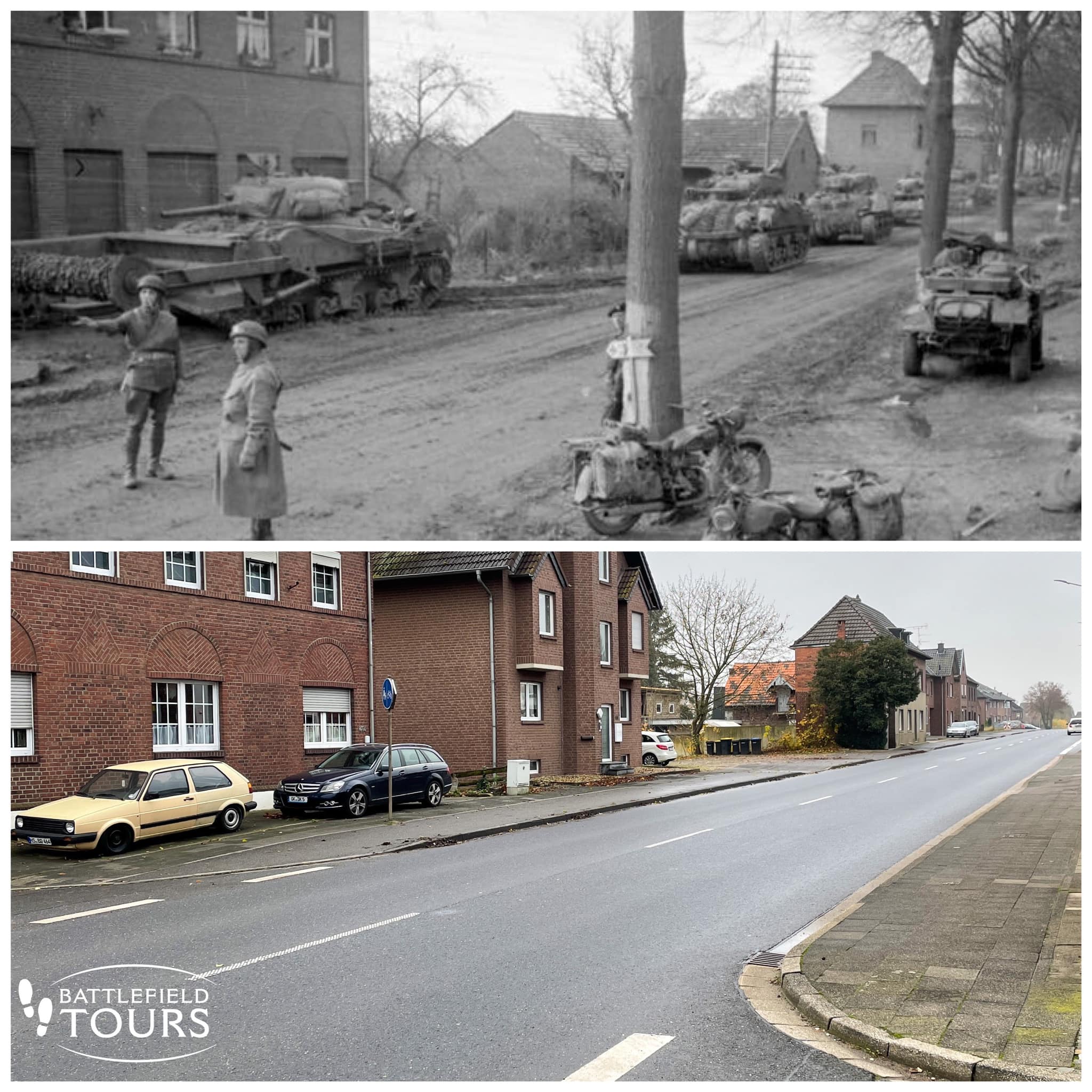
The photo below shows how the first German prisoners from the German villages Niederheide and Rischden are taken away via the northern exit road in Gillrath. In the opposite direction are the vehicles of the 7th Somerset Light Infantry and the 1st Worcestershire Regiment (43rd (Wessex) Infantry Division). In general, the German resistance during the first British attacks on November 18, 1944 was sporadic and light, many German soldiers on the front lines quickly surrendered. This was partly due to the heavy artillery shelling that preceded Operation Clipper.
About 250 British XXX Corps guns opened fire at 11 a.m. for a 12-minute artillery fire, much of which was destined for the small village of Bauchem, immediately west of Geilenkirchen. This photo also illustrates well the traffic jam that hindered the 5th Duke of Cornwall’s Light Infantry during the attack on Hochheid. The two houses on Püttstrasse still stand unchanged after 77 years, today they are the last houses in Gillrath. It was hard to get the right angle for this then and now photo, so they don’t match exactly.
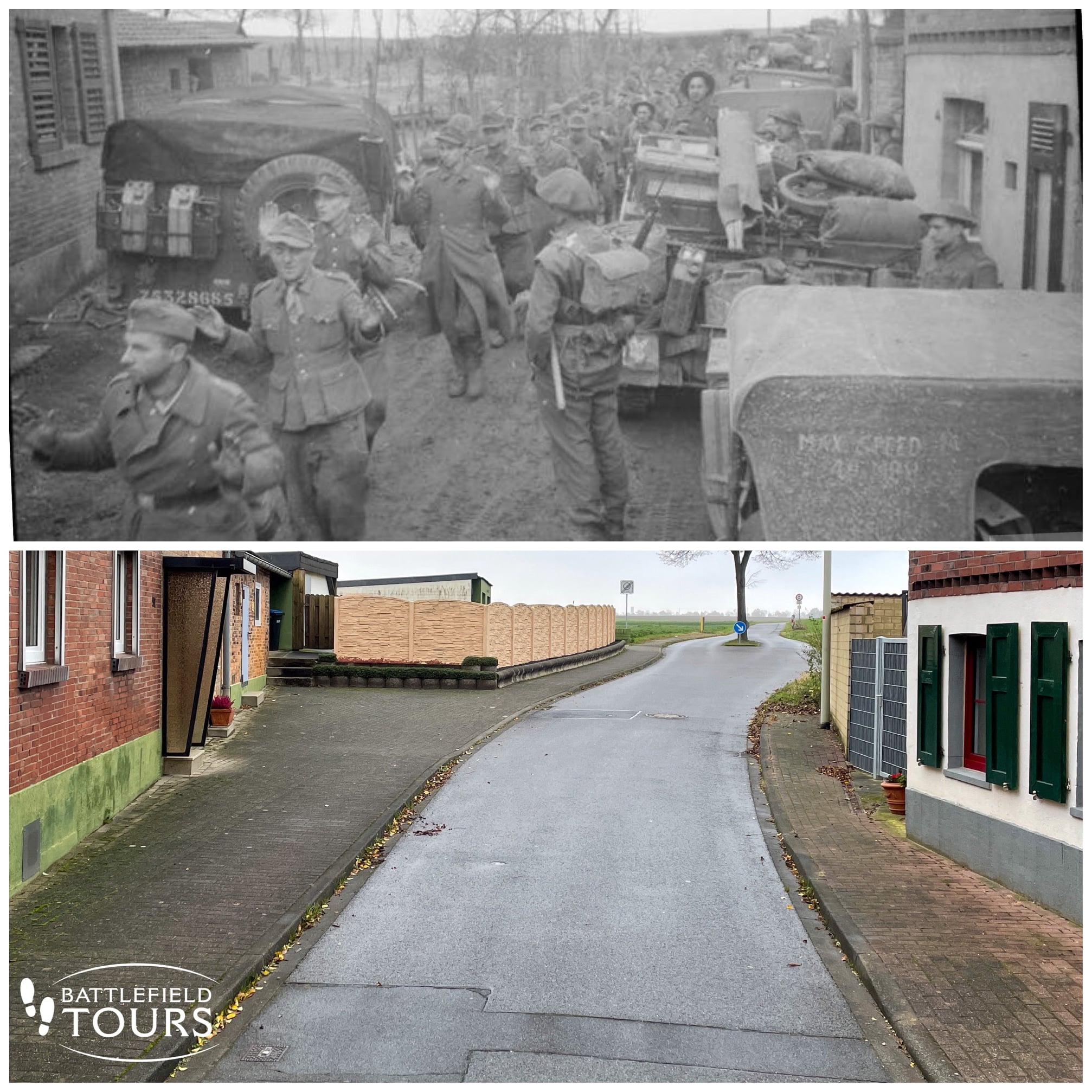
On the morning of November 19, 1944, the US 84th Infantry Division began the third phase of Operation Clipper. During this phase, the US 333rd Regiment would launch a frontal attack on the German town of Geilenkirchen. The plan was to send two companies along the Wurm River, with Sherwood Rangers A Squadron providing tank support. The two companies both advanced at the same time, but communication was immediately cut off due to faulty radios, leaving both companies to their own devices.
The A-Company had to advance through minefields, trenches and barbed wire barriers until they reached the first houses of the built-up area of Geilenkirchen at 09:00. From then on, the American soldiers became involved in house-to-house fighting and almost every house was defended like a fortress. It took A Company an hour to clear the first two houses.
The company progressed slowly along the main road and in a methodical manner the British tanks and infantry cleared every house and every street. At 2.30 pm the A company had cleared the German city. This then and now photo shows American soldiers from the A Company and British tanks from the Sherwood Rangers firing at German snipers in a building on the left. The building in the background is the St-Elisabeth-Krankenhaus.

One of the main targets of the 43rd Wessex Infantry Division during Operation Clipper and the attack on Geilenkirchen was the village of Bauchem. Prior to the attack, the village had been heavily shelled by 250 guns from the British XXX Corps, leaving the village in ruins. The 5th Dorsets were ordered to carry out the attack in the southeast direction of Bauchem around 3:30 PM on November 18, 1944. The German resistance was quickly crushed, the heavy artillery bombardment had demoralized the Germans and they surrendered easily. This then and now photo shows British soldiers of the 5th Dorsest clearing the badly destroyed village of Bauchem. The houses are still there and if you look closely you can see where the battle damage has been repaired.

By November 21, 1944, the American 84th Infantry Division had captured Prümmern, Geilenkirchen and Süggerath, but the battle was not over. The final targets of the fourth day of Operation Clipper were Müllendorf, Würm and Beeck. These villages were located in the middle of the strong sector of the Siegfried Line. The whole area was surrounded by bunkers, minefields, trenches and gun emplacements. These villages now blocked the advance route to the Roer and had to be captured. The attack on the three villages started in the pouring rain, with the 333rd Infantry Regiment launching a frontal attack from Süggerath on Müllendorf and Würm, and the 334th Regiment another frontal attack, from Prümmern on Beeck.
It became a nightmare for the American battalions, because of the heavy German resistance only a few hundred meters of ground was gained. None of the villages could be captured, leaving Operation Clipper completely bogged down in the rain and mud of the German winter. The 84th Division continued to attack the three villages for another four weeks. On November 29, 1944, the attack was resumed, this time on Lindern, the village behind Beeck, in order to attack the target from the rear. Beeck was taken the next day but Müllendorf and Würm fell only on December 18, 1944 – a full month after the start of Operation Clipper. The photo below shows a Sherman tank of the 4th/7th Dragoons in Gillrath. The tanks often got stuck in the mud during Operation Clipper, so tank support was not always possible.
Bronnen:
– Toen en Nu ’40 – ’45, De slag om Geilenkirchen door Karel Margry
– The Assault on Germany: The Battle for Geilenkirchen door Ken Ford
